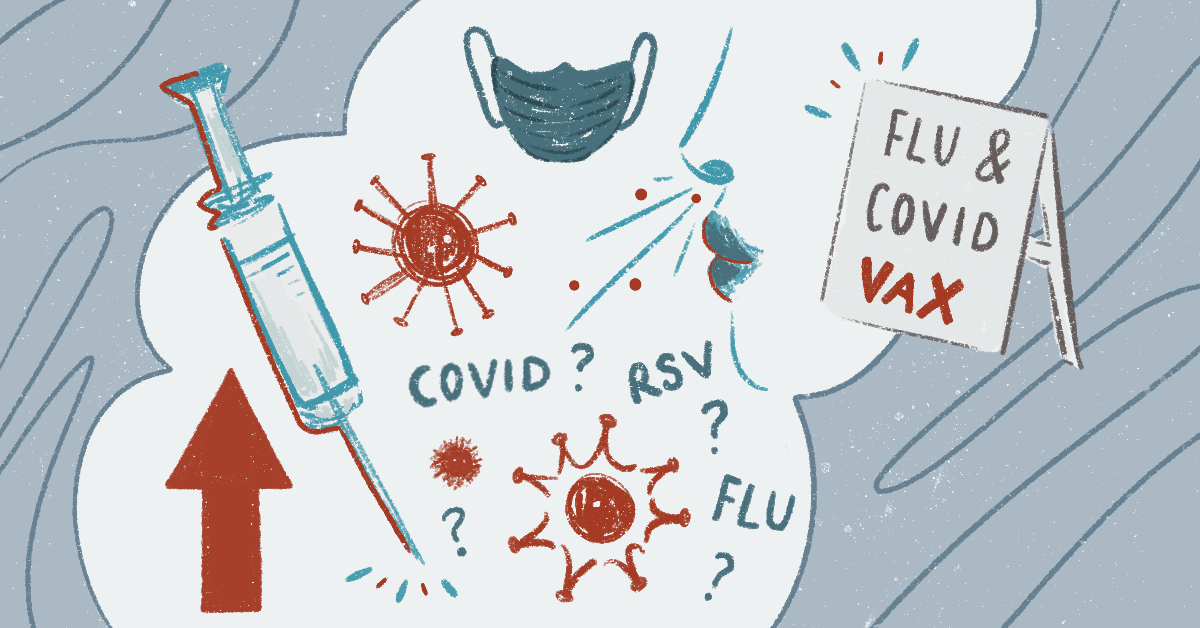Influenza epidemic begins in Canada alongside rising RSV infections and the Covid-19 pandemic
As temperatures drop and children’s cold medicine faces supply shortages, increasing prevalence of respiratory diseases spurs experts to recommend vaccination, masking, and avoiding crowds.
The Public Health Agency of Canada’s November 5, 2022, Respiratory Virus Report, revealed a steep increase in respiratory viral infections in recent weeks. According to the report, “Influenza activity is above the seasonal threshold of 5 per cent of tests positive,” reaching 11.7 per cent test positivity rate, which suggests that a nationwide influenza epidemic has started. Simultaneously, Canada is dealing with mounting respiratory syncytial virus (RSV) infections and the continuation of the Covid-19 pandemic.
RSV causes infections with symptoms similar to those of a regular cold, including coughing, sneezing, and a runny nose. The Public Health Agency of Canada states that RSV infections are higher than expected for this season. Influenza is another respiratory virus that spreads every year during colder months. The Centers for Disease Control and Prevention describes flu symptoms as “more intense” and more sudden than cold symptoms.
The Medium spoke with immunologist and U of T professor, Tania Watts, about the triple wave of viruses this winter.
“Influenza is a virus, which is always with us because there’s a large reservoir in wild birds,” says Watts as she goes over the longstanding history of the flu. “Periodically, some of these get into humans, usually through an intermediate such as swine, which can be infected by both avian flu and human flu.”
According to Watts, the flu and the RSV were suppressed during the previous two years due to lockdowns and masking measures. She explains that these measures were vital in protecting populations from Covid-19, but delayed exposure to RSV and influenza, particularly in children.
For most people, getting infected by such viruses results in mild sickness. However, the three viruses carry serious risks for vulnerable populations, such as the elderly, the immunocompromised, and especially children. “It’s mainly infecting the very young who’ve never been exposed, so that first infection is worse,” states Watts. Older citizens lose immunity with age, and as such, are also susceptible to the viruses.
Pediatric hospitals across Ontario are facing overwhelming numbers of patients because of the three viruses, partly due to low availability of children’s cold medicine. Many hospitals are operating over capacity and have been forced to reduce the number of surgeries.
To address the shortage of over-the-counter medicine, Health Canada announced on November 14 that shipments are incoming and distribution of medication has commenced. This includes a shipment of children’s acetaminophen that will become available in stores in the weeks to come.
Regarding the maintenance of public health safety, Watts advocates for vaccination—especially for children, due to the possibility of unknown mutations within their immune systems, placing them at risk. “Anytime there’s a new infection, certain people have genetic vulnerabilities, and we don’t know who they are,” says Watts.
Additionally, she believes masking and limiting contact with big crowds can help Canadians stay safe this winter. She advises people to consider “the length of time [spent indoors] and how well the place is ventilated,” and to wear masks in larger public areas such as schools and universities.
Health officials across Canada, including Ontario’s chief medical officer, Dr. Kieran Moore, have urged citizens to stay vigilant and wear masks. Regardless, as of November 20, 2022, mask mandates have yet to be reinstated.

